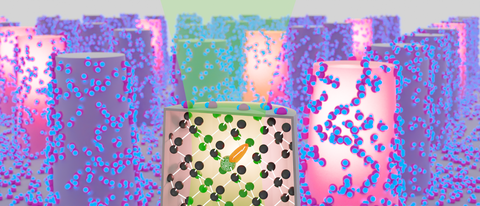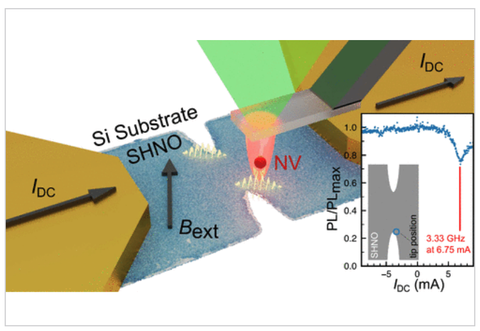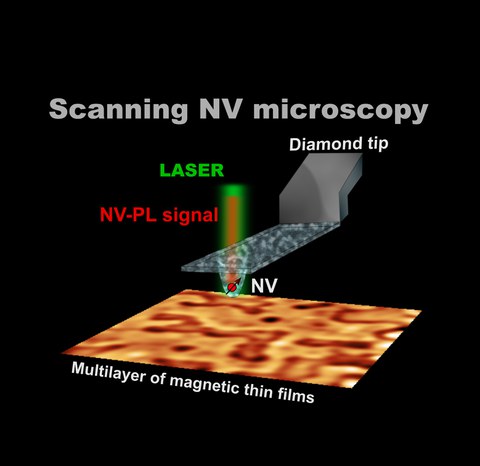Forschungsprojekte
Verbesserung der Funktionalitäten von oberflächennahen NV-Sensoren (<10 nm Tiefe):
Eines unserer laufenden Projekte auf dem Gebiet der Quantensensorik konzentriert sich auf die Verbesserung der optischen Eigenschaften und der Spin-Eigenschaften von nanoskaligen Quantensensoren auf Diamantbasis und die Entwicklung einer minimal-invasiven Methode zur Untersuchung magnetischer Strukturen auf atomarer Ebene, ihrer Wechselwirkungen und ihrer Dynamik. In einer kürzlich in Nano Letters veröffentlichten Studie konnten wir zeigen, wie kontrollierte Oberflächenadsorptionsprozesse die Leistung von oberflächennahen Quantensensoren in Diamant verbessern können. Um diese Forschung weiter voranzutreiben und robustere oberflächennahe Quantensensoren für einen zuverlässigen Betrieb unter extremen experimentellen Bedingungen wie Ultrahochvakuum und Temperaturen von bis zu 4 K zu entwickeln, untersuchen wir derzeit verschiedene dielektrische Beschichtungen auf Diamantsubstraten mittels Atomlagenabscheidung (ALD).
Oberflächengestützte isolierte Spinsysteme
Stabile oberflächennahe Quantensensoren sind sehr begehrte Messinstrumente für die nicht-invasive Untersuchung von oberflächengestützten Spinsystemen auf atomarer Ebene, und stehen im Mittelpunkt unseres laufenden Emmy-Noether-Projekts. Die erste experimentelle Studie in dieser Forschungsrichtung, die die Durchführbarkeit der EPR-Messung an einem einzelnen endohedralen Fulleren mit Hilfe eines solchen nicht-invasiven Magnetometrie-Ansatzes beweist, wurde kürzlich in Nature Communications veröffentlicht.
Erfassung magnetischer Streufelder und der Verteilung des magnetischen Rauschens
Ein weiterer Aspekt unserer aktuellen Forschung ist die zweidimensionale Darstellung sowohl der statischen als auch der dynamischen Magnetisierung künstlicher Antiferromagneten, 2D-van-der-Waals-Magneten, 2D-Supraleitern sowie von Bauteilen im Nanomaßstab mit Hilfe von Rastersonden-NV-Magnetometern.
Die Schlüsselidee besteht darin, die lokalen Eigenschaften im Nanomaßstab zu charakterisieren, die bei herkömmlichen Transportmessungen oft nicht sichtbar sind. Im Zusammenhang mit der Charakterisierung von Bauelementen ist es uns beispielsweise vor kurzem gelungen, magnetische Auto-Oszillationen in einem nanoskaligen Spin-Hall-Nano-Oszillator mit Rastersonden-NV-Magnetometer aufzuzeichnen. Diese kürzlich in Nano Letters veröffentlichte Publikation ist der erste direkte experimentelle Nachweis, bei dem wir wichtige offene Fragen bezüglich der Entstehung und der Art der magnetischen Auto-Oszillationen in solchen Bauelementen ansprechen, die als nanoskalige Mikrowellenspannungs- und Spinwellenquellen sowie für neuromorphe Computerhardware äußerst attraktiv sind.




